The newest addition to campus—the Sobeys Inspiration Hub—opens in Fall ’23. Watch for a behind-the-scenes tour of this inspiring building in progress.
Student-managed venture capital fund invests in Quebec-based online insurance distributor
The 2022 Venture Grade: Student Venture Capital Fund team.
An innovative Quebec-based online insurance distributor that removes barriers and offers affordable plans to young parents has received a boost from a student-run venture capital fund at Saint Mary’s University.
Venture Grade: Student Venture Capital Fund, a student-raised and managed venture capital fund, invested $12,500 in Quebec-based Emma Labs. Emma Labs is an online insurance distributor that focuses on distributing low-barrier life insurance, specifically targeted to younger demographics between the ages of 29 – 40 years of age, who have young children or are expecting children. To make life insurance more accessible and affordable, Emma Labs has removed cumbersome barriers to entry such as mandatory health checks, five to seven week wait times, and the requirement to speak to an insurance broker to streamline their process. In their role as an insurance distributor, they offer plans on behalf of insurance carriers.
The fund’s first investment outside of Atlantic Canada, Venture Grade chose to invest in the Quebec City start-up based on both company and market attributes. The company CEO and co-founder Felix Deschatelets is a serial entrepreneur with extensive experience in financing and marketing financial services start-ups. CMO and co-founder Jacomo Deschatelets has substantial experience in growth marketing strategies and financial security advisory.
“In terms of market attributes, the life insurance market is projected to grow over the next few years giving proven market demand,” says Hiro Tsuchiya, an associate investment analyst at Venture Grade. “We expect that Emma Labs will add significant value to our investment portfolio as it has excellent exit prospects.”
Founded in 2016, Venture Grade is a venture capital fund raised and managed by graduate and undergraduate students attending Saint Mary’s University located in Halifax, Nova Scotia. Nick Perrin, the Fund’s General Partner noted that Venture Grade liaises with Silicon Valley’s C100 group, Boston’s Canadian Entrepreneurs in New England, and most of the Atlantic VC funds like Innovacorp, Build Ventures, Sandpiper, NBIF, East Valley, Last 40, and Concrete.
“The Venture Grade student venture capital fund is designed to formulate a win-win-win scenario,” says Dr. Ellen Farrell, co-founder of Venture Grade and a professor at Saint Mary’s Sobey School of Business. “The fund contributors win by providing great opportunities for an unparalleled education experience; the students win by gaining scholastic opportunities not offered elsewhere; and the entrepreneurial ecosystem wins by having the funds go to worthwhile ventures in our entrepreneurial ecosystem.”
A place for possibility: the new Saint Mary’s University Entrepreneurship Centre
Saint Mary’s University Entrepreneurship Centre team members review and discuss the building plans. From right to left: Jada Joseph, Project Manager; Natasha Fernandes, Student Project Assistant; Michael Sanderson, Director and Chirag Narang, Project Manager.
Saint Mary's University has a rich history of fostering economic growth in Atlantic Canada and the people who are the driving force behind it, and its Sobey School of Business is synonymous with entrepreneurial success. More than 75 start-ups have been created by Saint Mary’s students, faculty members, alumni and partners in the past five years alone.
Building on this strong track record of helping launch new businesses, and with the generous support of the university’s donors and supporters, the Saint Mary’s University Entrepreneurship Centre (SMUEC) is preparing to move into its new home in the Sobeys Inspiration Hub. Set to open in fall 2023, this 43,000-square-foot four-storey building is the cornerstone of a 62,000-square-foot capital project that extends from the Sobey School of Business to the Loyola Academic Building.
"We envision a space that provides a full suite of services that enable students to take a start-up or business idea from concept to actualization—all in one place on campus," says Michael Sanderson, the Director of SMUEC. " We are a place for people to come together and develop entrepreneurial skills that can help further their studies and career.
With a focus on growth, innovation and cultivating the entrepreneurial mindset, the Saint Mary's University Entrepreneurship Centre is committed to helping the Atlantic Canadian economy grow and prosper. A university-wide and interdisciplinary support centre, SMUEC's physical expansion will support the vast array of programming, such as training, mentorship and coaching, offered by the centre and provide the foundation to expand and fill the growing demand for their services.
“I am so honoured to have been supporting students through their entrepreneurial experiences over the past two years,” says Shannon Byrne Susko BCom’89 BSc’92, a former Entrepreneur-in-Residence at Saint Mary’s and the Founder and CEO of Metronomics. “The new space for the Saint Mary’s University Entrepreneurship Centre will allow for further collaboration between faculties, and also bring in an additional level of innovation that we’ve been working towards with initiatives such as the March Madness Pitch Competition.”
As the Sobeys Inspiration Hub takes shape, so does the entrepreneurship centre’s new home. What remains constant is that a variety of opportunities that will be made available to entrepreneurial-minded students and faculty from across all faculties.
The services envisioned include:
digital prototyping lab
This area will be dedicated to digital product design, enabling students to ideate and create prototypes in a virtual environment using state-of-the-art prototyping software.
podcasting studio
From weekly podcasts to influencer videos, this space is open for booking to support students creating original content for online audiences.
collider spaces
Open collaboration spaces that are modular and feature additional smaller areas to focus on different styles of collaboration and projects.
incubator space
A start-up area dedicated to supporting local community businesses and emerging entrepreneurs as they move on from the idea phase.
dedicated interdisciplinary space.
"While the exact nature and dedicated areas may change, we are focused on providing opportunities for our students, faculty, staff, alumni and local community to come together and exchange ideas," shares Sanderson.
Alumni and the local community play a critical role in the support and services provided by the SMUEC. From the entrepreneurs and alumni-in-residence programs supported through the philanthropic investment of the RBC Talent Hub to guest speakers and mentorship, SMUEC connects students with the larger community. Through co-operative education and internship placements, training, Entrepreneurial Mindset Success Certificate, and experts, the RBC Talent Hub provides students more hands-on learning opportunities. The skills developed through this program give students a leg up in the job hunt and help them to excel in the workplace post-graduation.
"From my time as a student to now working at the entrepreneurship centre, our alumni and connection with the local entrepreneurship community have been so important to supporting students," says Leslie Arsenault Bcomm’19, Project Manager with SMUEC. "I've seen student-led businesses receive key advice from community mentors at vital times in their growth. I've heard from students and alumni whose careers and businesses wouldn't exist without what they learned at Saint Mary's University and the support they received from SMUEC."
"We are excited to create new memories and opportunities for collaboration and innovation," says Monique Boudreau, the Manager of Operations and Community Engagement with SMUEC. "We've received great feedback and insights from different university areas to get to this stage, and we are incredibly grateful for that support. We can't wait to celebrate the opening of the Sobeys Inspiration Hub, the Exchange and the new entrepreneurship centre."
Celebrating excellence: Saint Mary’s faculty recognized for external research funding
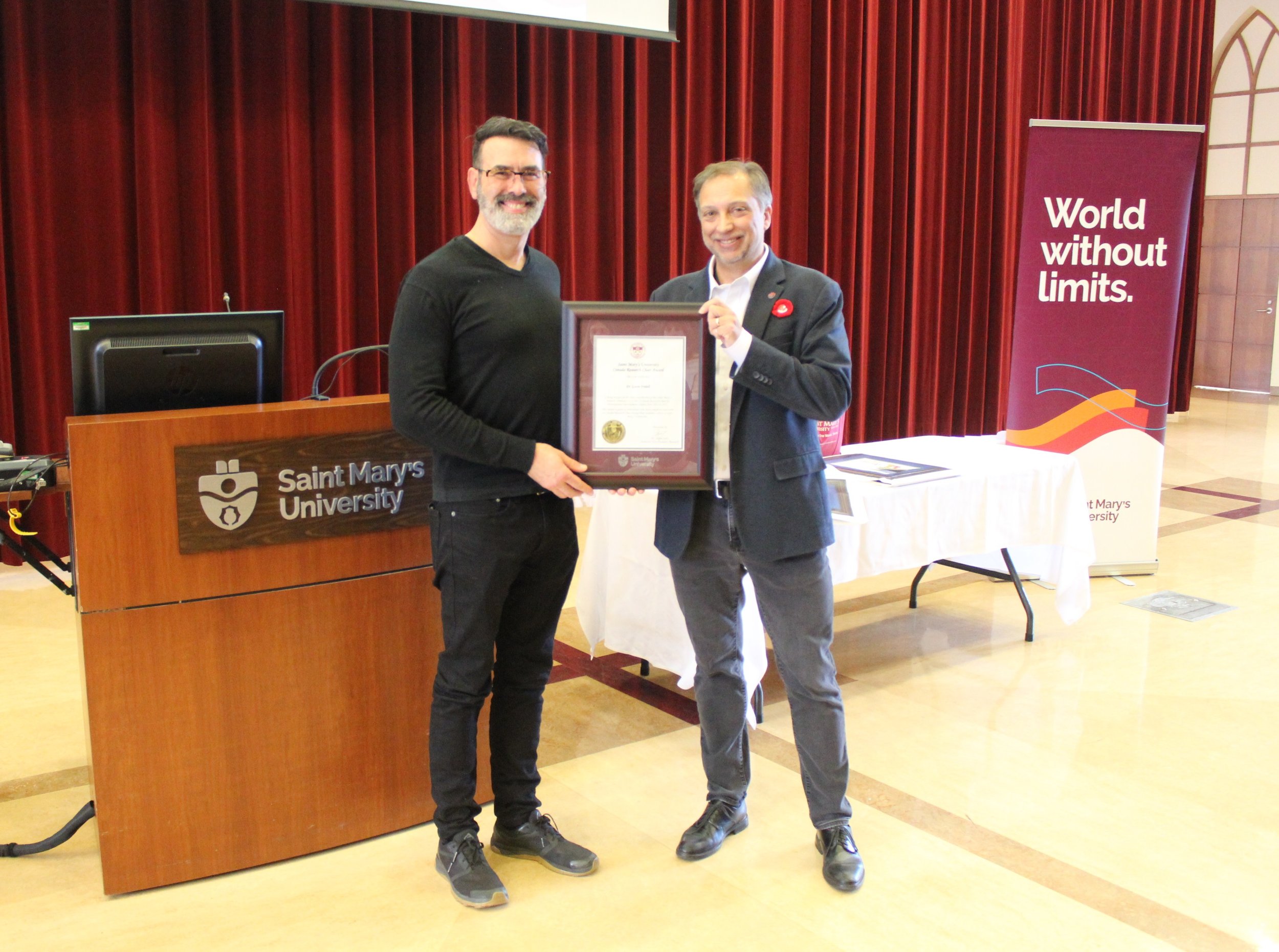
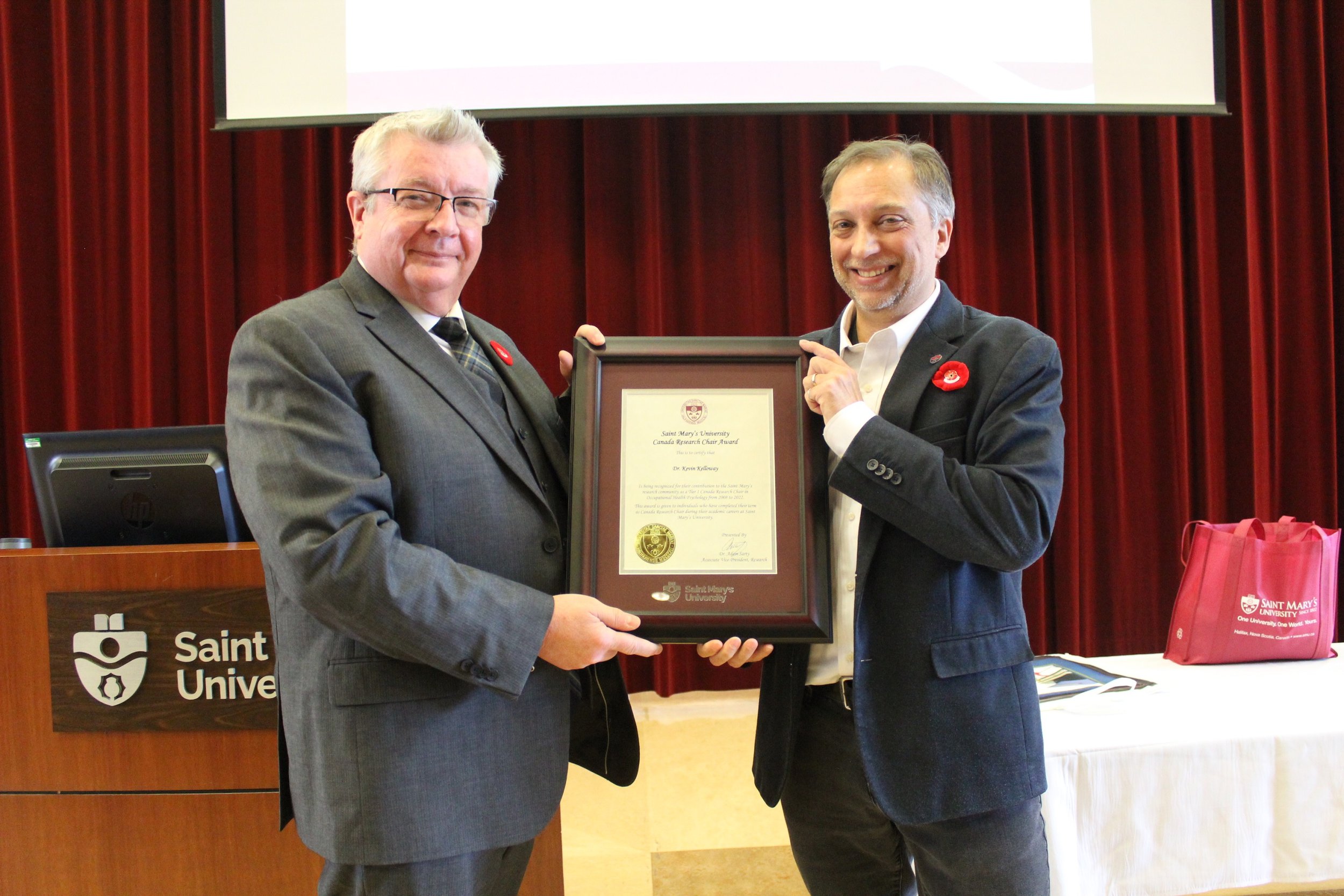
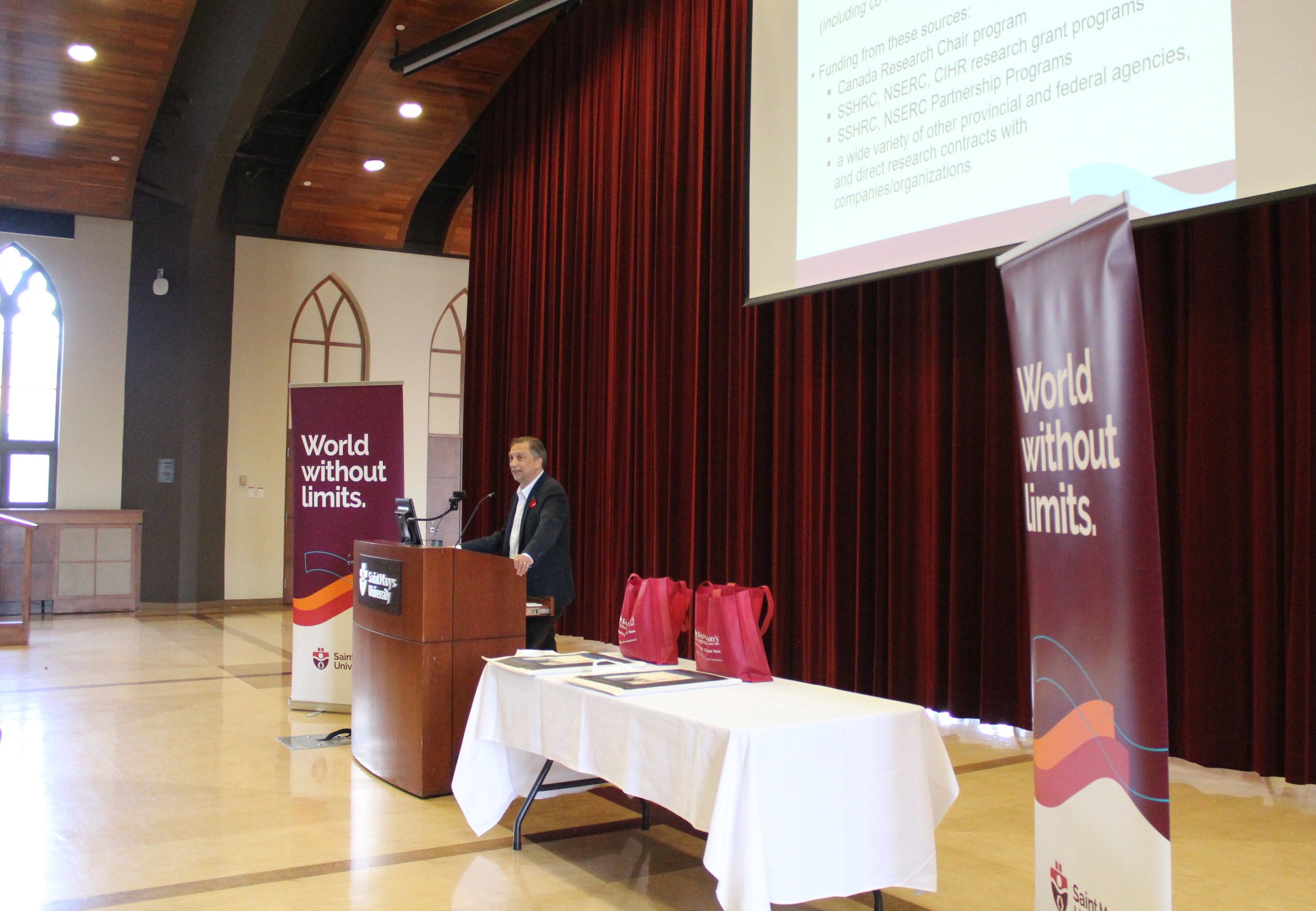
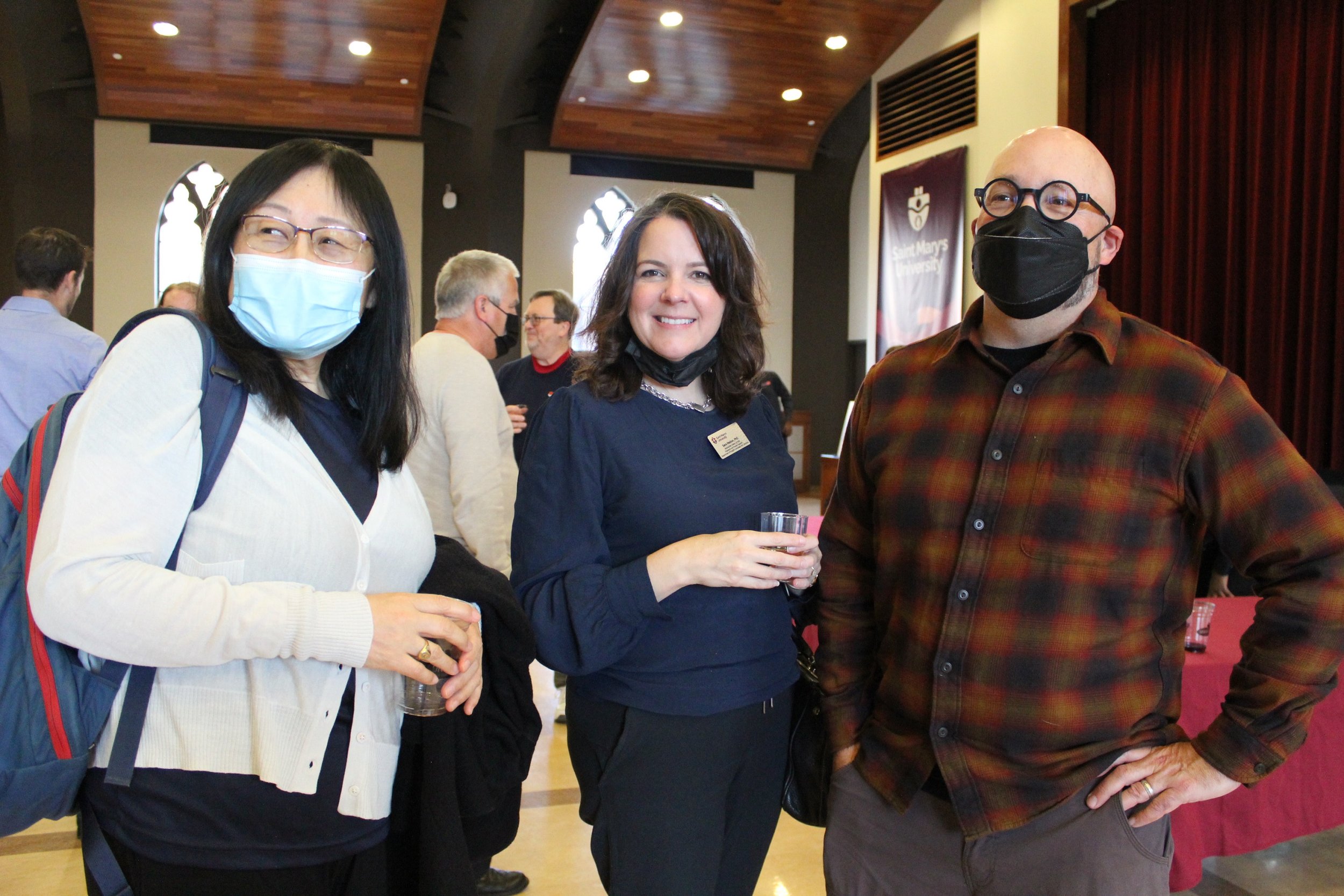

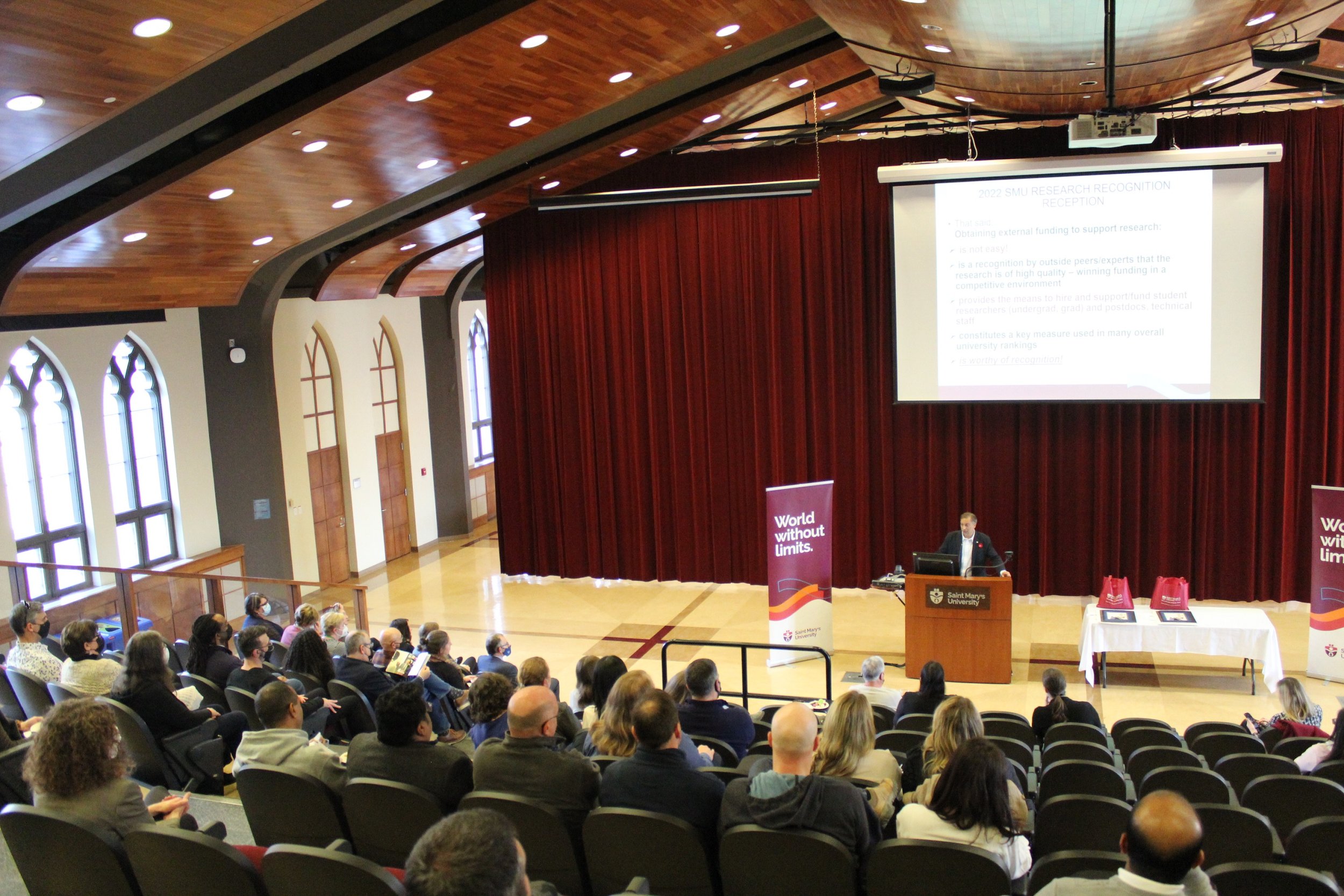
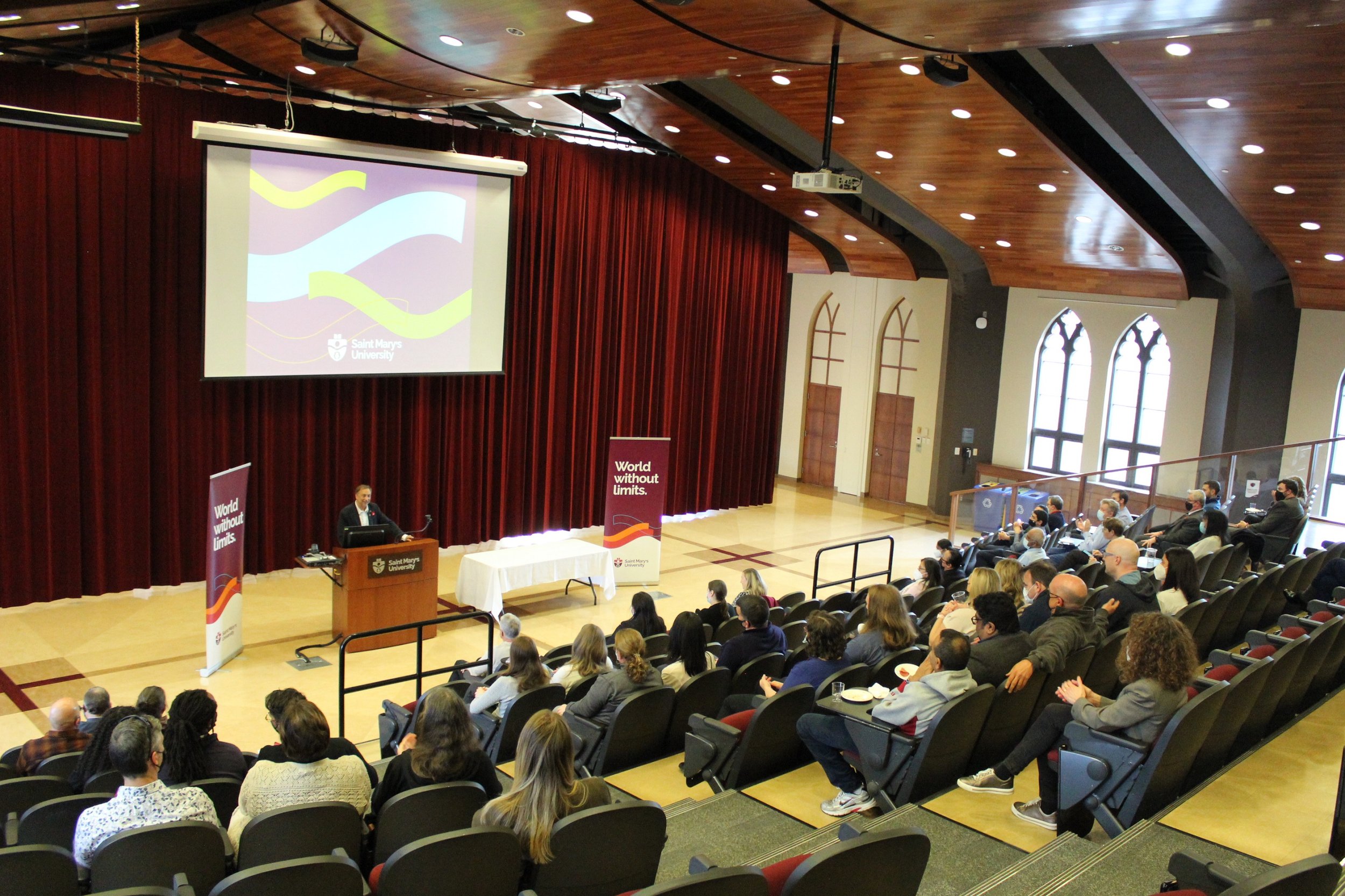
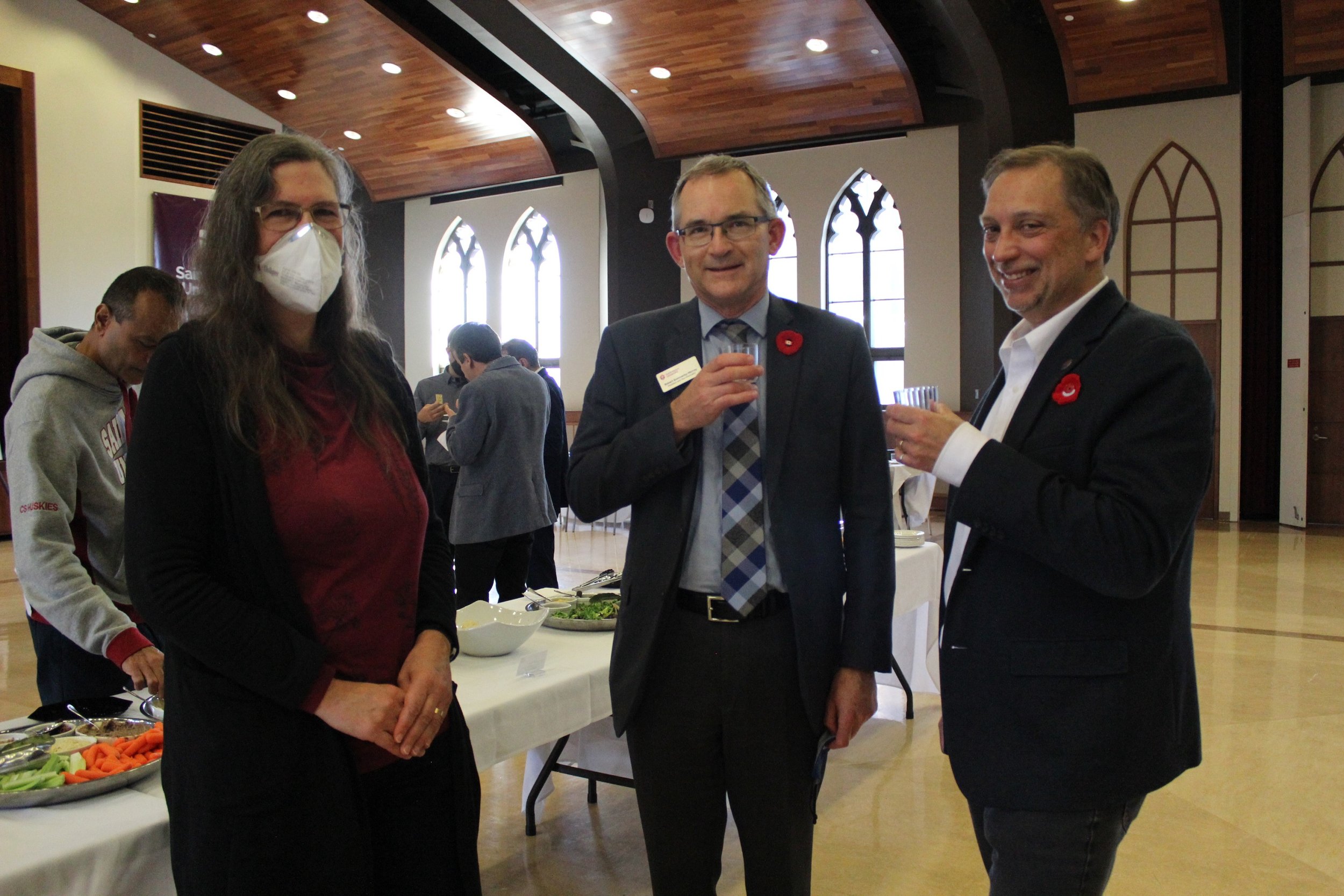
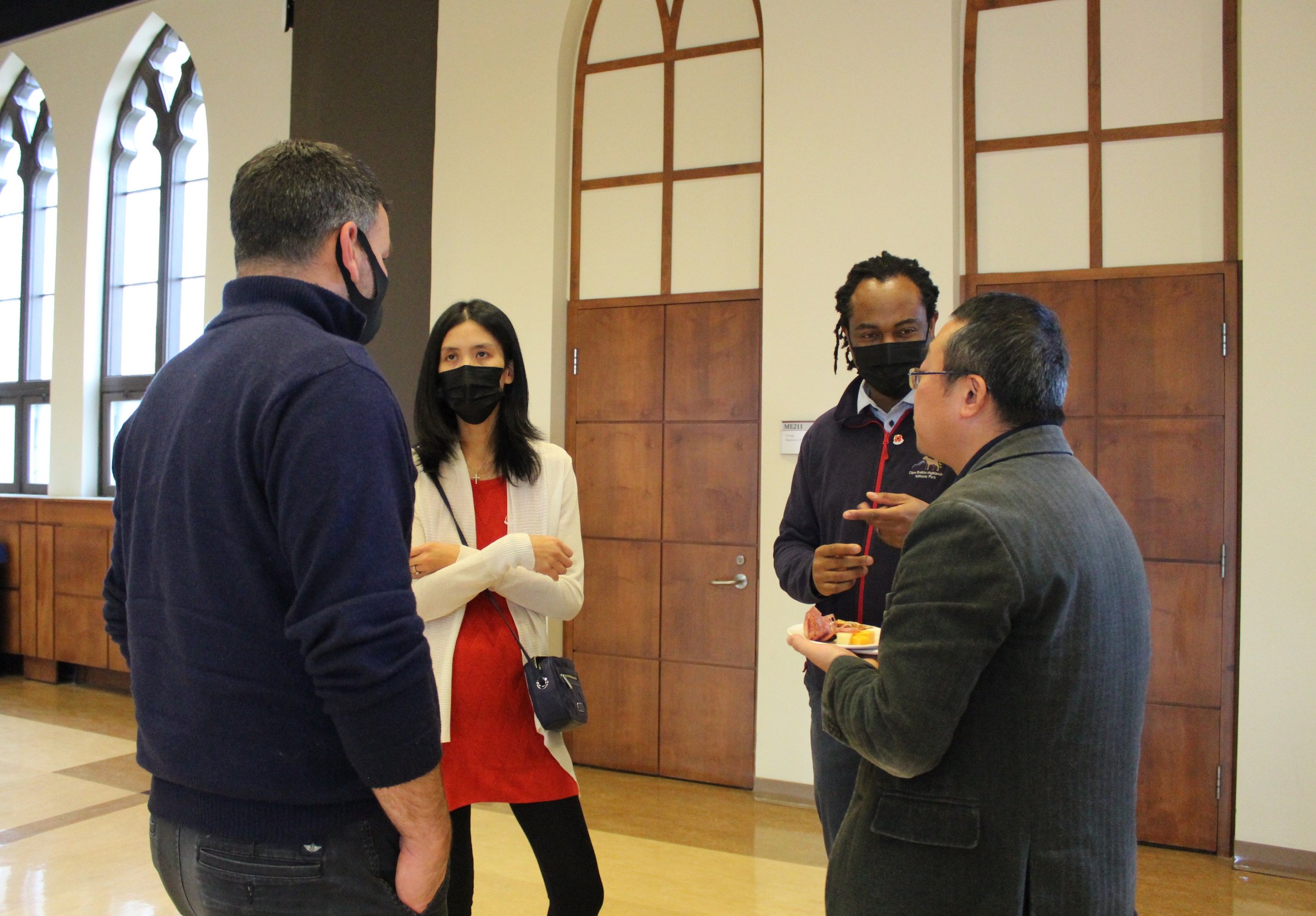
Researchers at Saint Mary’s University continue to be recognized for their important work in their fields, securing over $11 million dollars in external funding in the form of research contracts, Canada Research Chair positions and tri-council grants, over the last 12 months.
A celebration to honour 90 researchers from faculties of Science, Arts, and the Sobey School of Business took place in the McNally Theatre Auditorium on November 10th. A few examples of how their research contributions will impact our communities include investigating healthcare resource planning for older adults, exploring how to retain international students in Atlantic Canada, and enhancing Canadian vaccination strategies using machine learning and business analytics.
Special recognition was given to Dr. Gavin Fridell, Tier 2 Canada Research Chair (CRC) in International Development Studies (2012 to 2022) and Dr. Kevin Kelloway, Tier 1 CRC in Occupational Health Psychology (2008 to 2022) for completing their CRC terms during their academic careers at Saint Mary’s University.
Our ecosystems will benefit from Saint Mary’s researchers that are implementing small-scale fisheries guidelines, conducting salt marsh restoration and community-based watershed monitoring. Other research is determining the future impacts of freezing and storing sperm to assist the endangered Inner Bay of Fundy Salmon population.
The quality of research happening here at Saint Mary’s University is something that we should all be proud of, congratulations again to the CRCs who recently completed their terms, and all of those that have been recognized.
Engineering students tour on-campus construction site
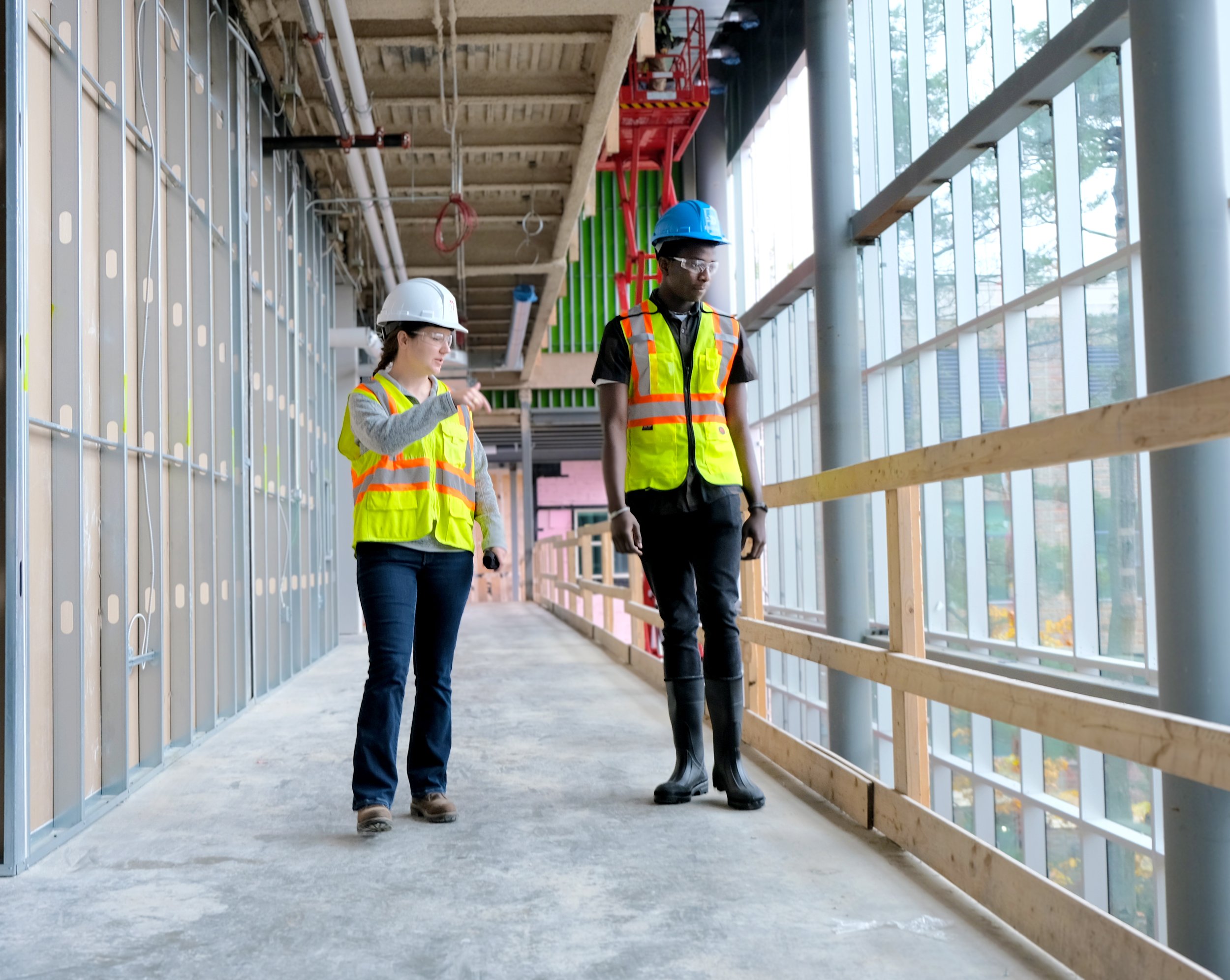
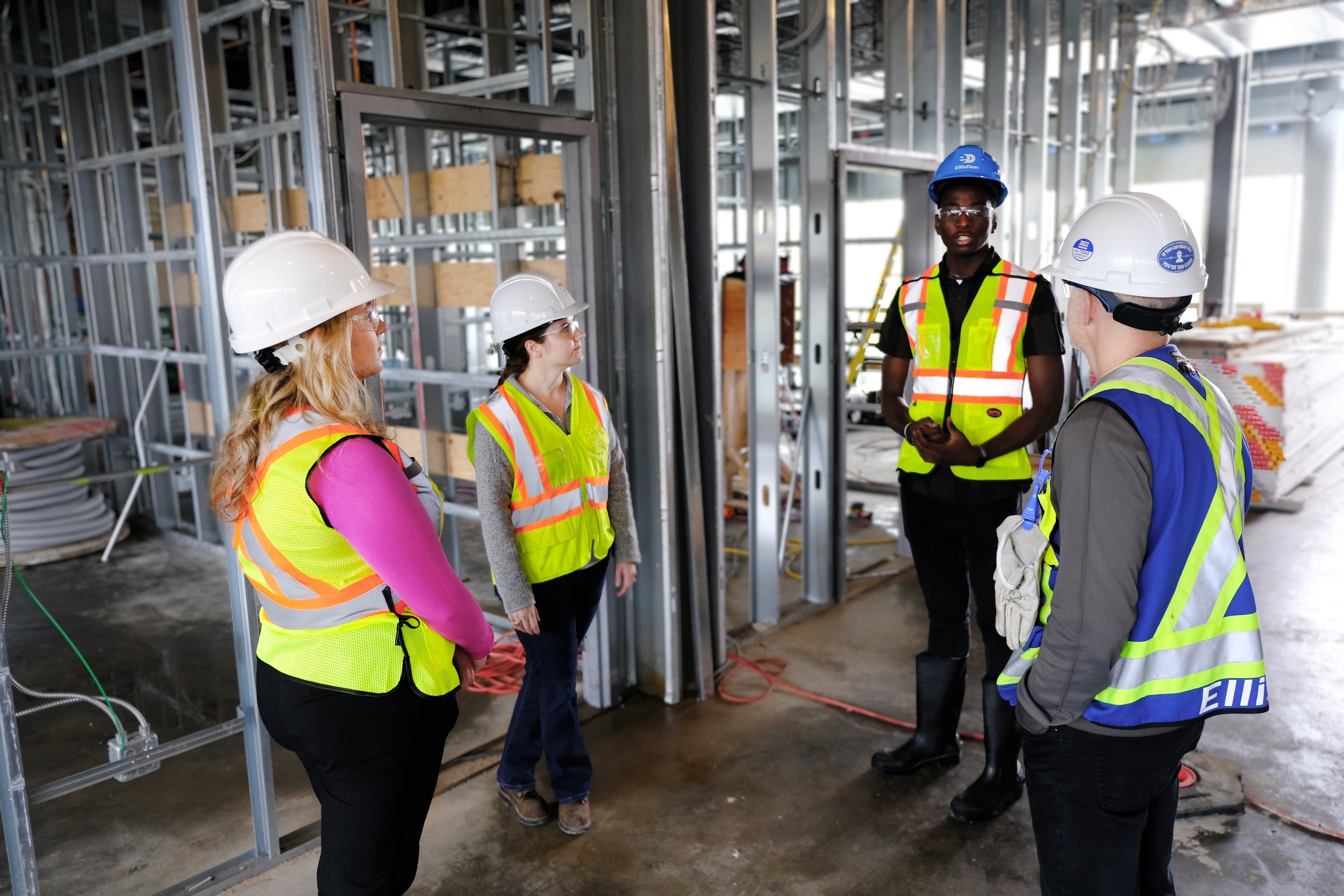
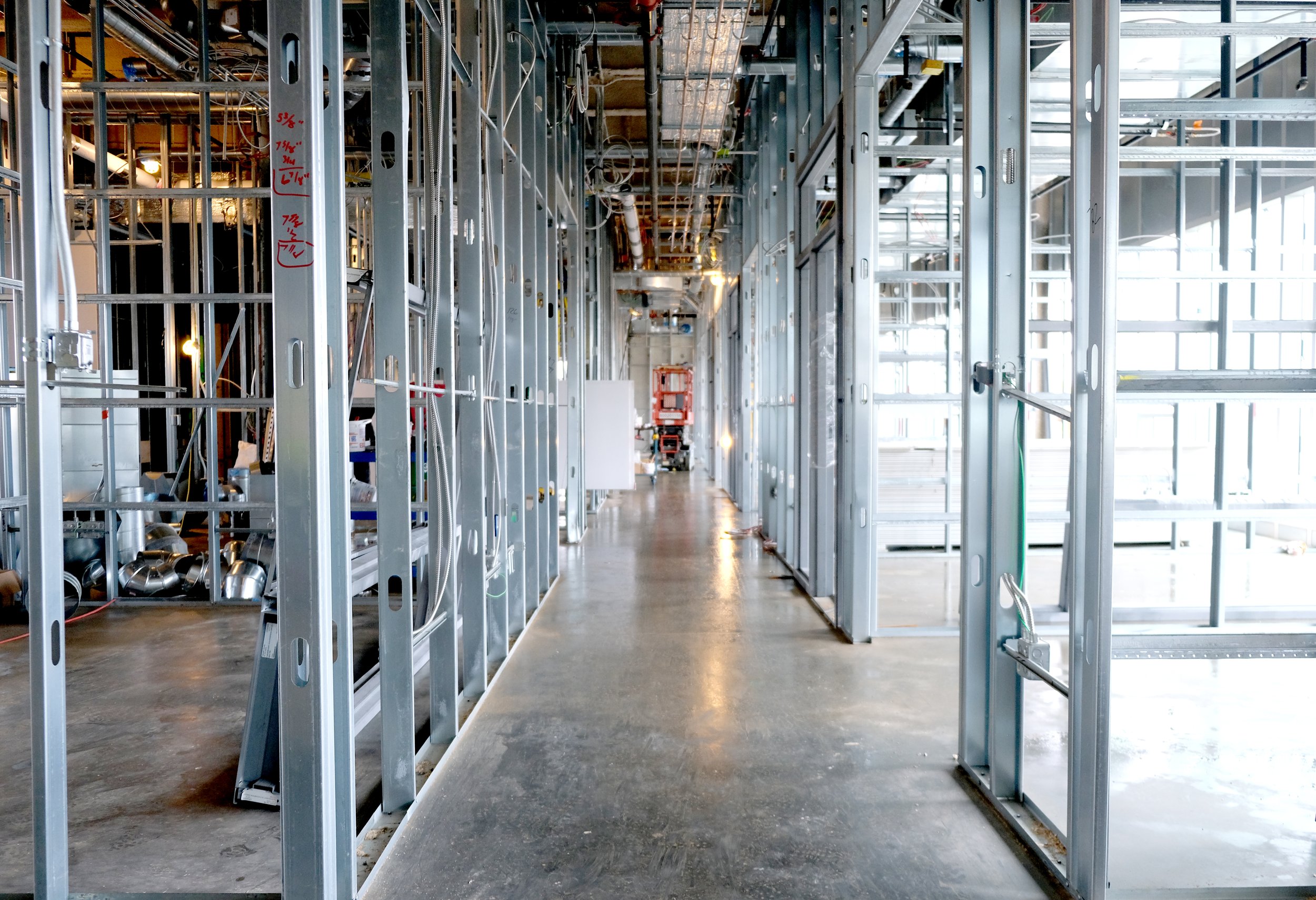

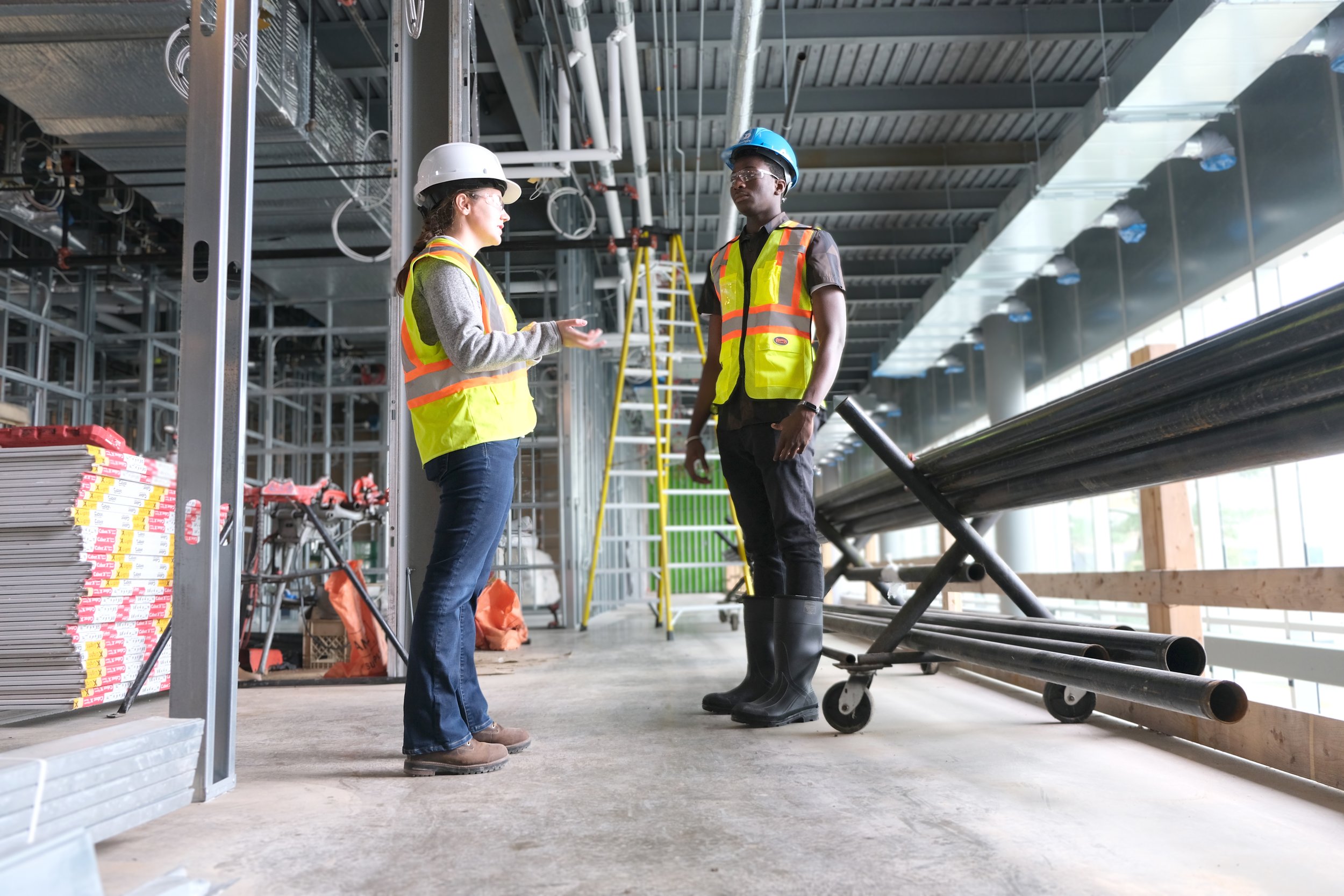

Saint Mary’s engineering students were invited to get an inside look at the Sobeys Inspiration Hub construction site early in November. The EllisDon construction team and Jillian MacMillan, Project Manager with Facilities Management, connected with the SMU engineering society to offer detailed tours, answer questions and inspire students.
“This tour was an awesome opportunity,” says engineering student Oluwatomiwa Dotun-Olutola. “It’s great to see engineering work in progress and get to experience hands-on work.”
In addition to getting a tour of the construction site, the students met with project managers from SMU and professionals from EllisDon who shared their experiences of working in the construction field and how they found themselves in these roles.
“I have an engineering degree,” says MacMillian. “I would have loved to have the opportunity to take a tour through an active construction site to see what it was all about!”.
Learn more about the new building on campus here.
Saint Mary’s installs new bike repair station
You may have recently noticed a bright orange post outside the Language Centre – it’s a convenient and easy-to-use self-service bike repair station! As part of his work term as a Facilities Assistant with the university, engineering student (and bike enthusiast) Oluwatomiwa Dotun-Olutola spent months researching and building the perfect tool for SMU campus.
Designed as an on-the-spot tool that lets the average cyclist do simple repairs, the bike repair station features a place to suspend a bike, a pump with multiple valves, and a collection of tools for other adjustments. The station also provides educational videos and step-by-step guides to fix basic issues via a QR code.
“I think the station is a wonderful addition to campus,” says Dotun-Olutola. “It is great for sustainability and accessibility. I am eager to see people take advantage of it.”
This project aligns with Saint Mary’s green initiatives and sustainability commitment. Learn about our sustainability initiatives here.
Check out the new station outside the Language Centre!
Nancy Foran Appointed Chair of Sobey School of Business Advisory Council
Nancy Foran BComm’92
The Sobey School of Business is pleased to appoint Nancy Foran BComm’92 as Chair of the Sobey School of Business Advisory Council. With over 25 years of experience spanning numerous industry sectors, Foran brings a focus on sustainability and environmental, social and governance (ESG) to the school’s council of business experts.
“I welcome this opportunity to work with the council to leverage our collective expertise and networks,” says Foran. “My goal is to amplify the voice of the Sobey School of Business, and to support its focus on sustainability in business.”
Foran, a Chartered Professional Accountant (CPA), a Fellow of the profession (FCPA), and a Chartered Director (C. Dir.), is educated in the leading global sustainability standards and frameworks including GRI and TCFD. She is also an FSA Credential Level 2 candidate in ESG with the Sustainability Accounting Standards Board (SASB). In 2021, Foran founded ESG Partners, where she provides guidance to companies and investors, boards of directors and senior leadership teams as they incorporate ESG factors into their organizational strategies and define their purpose to create long-term, sustainable value.
In addition to Foran’s appointment as Chair, Bruce Bowser BA’17 has been appointed as Vice-Chair. Bowser is a highly respected Canadian business leader and CEO of AMJ Campbell Van Lines. A well-known business authority, Bowser is frequently sought out by the media to provide his innovative and entrepreneurial point-of-view. He has also been featured in notable publications such as the National Post, The Globe and Mail, and Business Edge.
The Advisory Council of the Sobey School of Business is a group of notable business experts who lend real-world experience and knowledge to the school, with the goal of providing insight and support to the school. The Advisory Council provides advice that will ensure graduates from the school succeed in the current business world. In addition to the Chair and the Vice-Chair, Martha Casey BA’01, Cynthia Dorrington, Saeed El-Darahali BSc02 MBA’04 and Joanne Hames serve as the other external members of the Advisory Council.
“We are excited to have Nancy Foran appointed as Chair of the Advisory Council,” said Dr. Harjeet S. Bhabra, Dean of the Sobey School of Business. “Her experience in sustainability and ESG is closely aligned with key elements of our strategic plan. Her leadership will help us further our goal of integrating sustainability in our curriculum and other school initiatives.”
Foran is also a speaker at this year’s 4th Annual Responsible Leadership Day event on November 18. This year’s theme is Digital Future: Ethics, Integrity & Values, and Foran will be providing context and sharing her perspective on the Sobey School of Business and ESG. The event will also include a keynote speech by Juliette Powell, a panel on how artificial intelligence (AI) and data analytics can support an organization’s climate action initiatives and goals, and a circular economy student challenge.
Read the 2022 Advancement & External Affairs Report
The Office of Advancement and External Affairs is proud to share the 2022 Advancement & External Affairs Report.
This report highlights the programs and projects behind our alumni engagement, fundraising, government relations and external affairs results and successes and their impact on the university.
The Office of Advancement and External Affairs facilitates engagement from our local and global community in philanthropic action to invest, share and celebrate the success of Saint Mary’s University.
We are truly grateful for the commitment, dedication and support of everyone on campus and this work would not be possible without your involvement in a multitude of ways throughout the year.
Thanks to the active engagement of our community and the incredible generosity of our donors, we celebrate another successful year at Saint Mary’s University.
Researching microbial-terroir and its impacts on wine flavour
A collaboration between Dr. Clarissa Sit’s chemistry lab and L’Acadie Vineyards is marrying Nova Scotia’s history of winemaking with modern chemistry. The research is exploring the effects micro-organisms have on the flavours of grapes in Nova Scotia’s vineyards. L’Acadie Vineyards owner Bruce Ewert was excited to partner with Dr. Sit to determine what unique fungi and bacteria contribute to the flavour profiles of wines produced at his award-winning, Annapolis Valley vineyard.
“This project came about because of one of the students in my research lab,” says Sit. “After attending a research seminar, we started looking at the micro-organisms in the soil and on the surface of grapes in Nova Scotia vineyards.”
Sit’s research presented an opportunity for L’Acadie Vineyards. The first certified organic vineyard in the province and the first biocyclic vegan winery in North America, the family-owned business specializes in an array of organic natural wines.
While conventional wines are frequently treated with sulfites to kill microbes, natural wines rely on native yeast from the fermentation process to do so. Microbes in the soil are splashed onto the grapes during irrigation and rain events.
“The mixture of micro-organisms on the surface of the grapes adds flavour to the wine,” says Sit. “That’s what we’re curious about, and vineyard owners are equally curious. We want to see if there are differences in the year-to-year vintages depending on how microbes affect their flavour profiles.”
"Dr. Sit has been so supportive and encouraging. I never thought I would study wine yeasts and the complexities of natural winemaking. I love telling people I am getting a PhD in wine," says graduate student Lauren Grant, pictured above (far right).
In her research, Sit has compared soil samples from L’Acadie Vineyards with those from conventional vineyards to determine the difference between micro-organisms in the soil. These samples were brought back to the lab to isolate some of the strains for in-lab fermentation.
“We’re adding some of those strains into sterile grape juice to see what chemical profiles they’re producing. We can analyze the strains we’ve been able to isolate to see what flavours each of the microbes are producing and create interesting new combinations.”
While research is expected to continue for another three years, the project has the potential to grow depending on its findings, says Sit.
“The focus will now be on the profiling and figuring out what aromatic compounds these microbes are producing and how vineyards can use them to create flavour while benefitting the environment.”
Related stories:
Helping the North Atlantic Right Whale rebound
At nearly 70 tonnes, the subjects of Dr. Timothy Frasier's research are massive examples of how quickly a species can progress to the brink of extinction. North Atlantic right whales are one of the most endangered large whales globally, with fewer than 400 in existence. While protection initiatives are in place, Dr. Frasier is concerned with the whale's low reproduction rate.
Using genomic data, Dr. Frasier works to better understand what genetic factors limit the species' recovery. Early hypotheses suggest that low genetic variation and inbreeding could be possible factors. By determining the factors that limit reproductive success, conservation efforts can be more effective and efficient in saving the species from extinction.
Photo credit: New England Aquarium IUCN/PA
"By working with colleagues and governments in Canada and the United States, we can move fairly quickly from research results to impacts on policy and procedures," says Dr. Timothy Frasier of the Faculty of Science. "Right whales are in a very precarious situation, and we need to identify how conservation actions can be changed to improve the chances for the species to recover."
With $6 million in new funding, Dr. Frasier and his colleagues from Genome Atlantic and the New England Aquarium can continue their research into what factors limit the reproductive success of right whales. This work will help focus conservation efforts to save these beautiful mammals.
Did you know? Each year, our Faculty of Science and the Canadian Whale Institute host a 10-day Marine Mammal Summer Camp, where teens conduct hands-on marine research in the laboratory and off the coast of New Brunswick (pictured above).
Related stories:
Creating opportunities for Indigenous girls in sport
Creating safe and welcoming places on campus and through sport is at the forefront of everything Ryan Francis stands for. In 2019, he co-founded the Indigenous Girls Hockey Program, which operates in Eskasoni, Membertou and Truro, NS (close to Millbrook First Nation and Sipkne’katik First Nation), and has seen nearly 200 school-age girls participate. He believes that representation and connection are vital for a positive experience in hockey and that helping Indigenous girls to experience the game with their peers is important.
Huskies hockey player Erin Denny (of Eskasoni First Nation) has been involved since the beginning, providing the girls with insight into her lived experience and encouraging them to feel seen, heard and understood in an environment that is comfortable and familiar.
“As a SMU hockey player, it’s great to be able to connect with the broader community,” says Denny. “Through this program, I can contribute to the development of young athletes and show these girls there is a place for Indigenous youth in sport at every level.”
Did you know? Ryan Francis, the university’s first Indigenous Visiting Fellow, works closely with our Centre for the Study of Sport and Health on initiatives that increase the knowledge and awareness of Indigenous participation in sport, such as the Red Tape Game and Indigenous Sport Week.
Related links:
Saint Mary’s contribution to the James Webb Telescope
“The Sparkler” galaxy—seen here in JWST’s first deep image—was found by Saint Mary’s astronomers and colleagues and hosts some of the universe’s first stars. Credit: NASA
The James Webb Space Telescope (JWST), the most powerful space telescope ever built, has a Saint Mary’s connection. Dr. Marcin Sawicki, Canada Research Chair in Astronomy, is part of the team that developed a key part of the telescope, namely the Near Infrared Imager and Slitless Spectrograph (NIRISS), which records data at near-infrared wavelengths invisible to the human eye.
“Stars, galaxies and objects all have an infrared pattern, similar to a barcode” says Dr. Sawicki. “With the NIRISS, we can read the object’s bar code and figure out all sorts of properties like how old it is, how far away it is and whether it’s a galaxy or other space object.”
Dr. Sawicki and his students have unprecedented access to the Webb telescope. “Our postdocs and students will be using JWST to observe the birth of the first galaxies soon after the Big Bang.” he says. “The potential for extremely impactful science is enormous. We’re eager to use Webb for world-leading research here in Nova Scotia.”
Did you know? “The Sparkler” galaxy—seen in JWST’s first deep image—was found by Saint Mary’s astronomers and colleagues and hosts some of the universe’s first stars.













